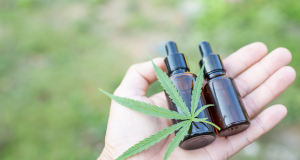Given that cannabis smoke is chemically distinct from tobacco smoke, researchers Aaron Wylie and Jonathan Abbatt aimed to identify the compounds formed when THC on surfaces reacts with ozone in the air.
To this effect, they coated glass and cotton cloth, to simulate windows and clothing, with a THC solution, and then exposed these surfaces to concentrations of ozone that would normally be present in indoor air.
The amount of THC on surfaces decreased as oxidization compounds increased
The researchers found that over time, the amount of THC on glass and cotton decreased, while the quantities of three THC oxidation compounds increased. In other experiments, using a smoking machine to deposit cannabis smoke onto surfaces, the same three oxidative compounds were formed in contact with ozone.
The researchers explained that due to the low volatility of THC and its oxidation properties, it is unlikey that it can be emitted in the air in amounts significant enough to be inhaled, such as in the case of nicotine. They added that however, somebody could still be exposed to THC and its derivatives, if for example, they lick their fingers after touching a surface contaminated by cannabis smoke.
Read Further: EurekAlert!





![Recent Conference Urged Nations Worldwide to “Quit [Smoking] Like Sweden”](https://www.vapingpost.com/wp-content/uploads/2024/04/vape-conference-238x178.png)





